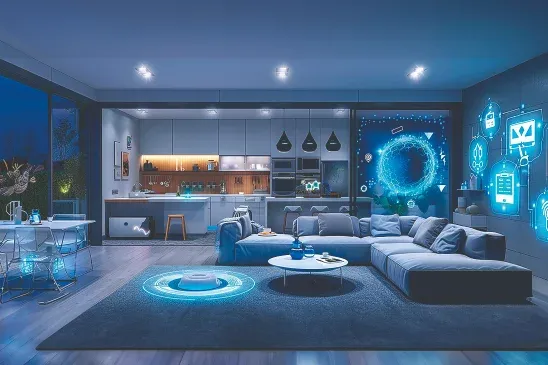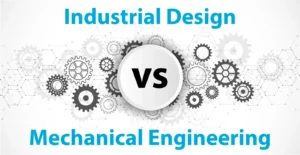Revolutionizing the Everyday: How Design Is Transforming Home Appliances
Did you know that 83% of consumers now rank design as a primary factor when purchasing home appliances? Gone are the days when functionality alone drove purchasing decisions. Today’s consumers demand appliances that not only perform flawlessly but also enhance their living spaces aesthetically.
For manufacturers and product developers, this shift presents both a challenge and an opportunity. How do you create appliances that stand out in an increasingly competitive market while meeting ever-evolving consumer expectations? What design elements will capture attention and drive sales in today’s homes?
In this comprehensive guide, we’ll explore the top 10 industrial design trends revolutionizing home appliances this year. Drawing from our extensive experience designing everything from smart refrigerators to innovative coffee makers, we’ll provide actionable insights to help your products capture market share and consumer imagination.
Why Industrial Design Matters More Than Ever for Home Appliances
Before diving into specific trends, it’s important to understand why industrial design has become so crucial in the home appliance sector.
According to research from the Consumer Technology Association, appliances with superior industrial design command an average price premium of 28% over functionally similar counterparts. More significantly, they enjoy 41% higher customer satisfaction ratings and substantially better brand loyalty.
At RDS, we’ve seen firsthand how thoughtful industrial design transforms ordinary appliances into extraordinary experiences. The most successful home appliances today share three essential qualities:
- Seamless integration with modern living spaces and lifestyles
- Intuitive usability that reduces learning curves and frustration
- Emotional resonance that creates connections beyond mere utility
Now, let’s explore the design trends making the biggest impact this year.
Trend #1: Minimalist Aesthetics with Hidden Functionality
The Rise of Clean, Uncluttered Designs
Today’s home appliances are embracing the “less is more” philosophy, with sleek surfaces, reduced visual noise, and concealed controls.
This trend responds directly to consumer preference for appliances that complement rather than compete with their home décor. According to a study published by the American Society of Mechanical Engineers (ASME), 76% of consumers prefer appliances that blend harmoniously with their living spaces.
Our product design and 3D modeling services have incorporated this approach in several recent projects. For instance, we developed a countertop mixer with touch-sensitive controls embedded within its surface, eliminating the need for protruding buttons or dials.
Key elements of this trend include:
- Flush surfaces with minimal seams or breaks
- Controls that appear only when needed
- Hidden compartments for accessories and components
- Monochromatic color schemes with subtle texture variations
This approach doesn’t just satisfy aesthetic preferences—it also improves cleanability and durability, addressing practical consumer concerns.
Trend #2: Sustainable Materials and Circular Design Principles
Eco-Conscious Design Beyond Greenwashing
Sustainability has evolved from a marketing buzzword to a fundamental design principle, especially in home appliances.
Today’s consumers are increasingly environmentally conscious, with 67% willing to pay more for appliances with genuine sustainability credentials, according to the National Institute of Standards and Technology (NIST). The key here is authenticity—consumers are becoming adept at distinguishing between substantive sustainable design and superficial greenwashing.
Our mechanical design team has embraced this challenge by implementing several sustainable design strategies:
- Material innovation: Incorporating recycled polymers, bioplastics, and responsibly sourced metals
- Design for disassembly: Creating products that can be easily taken apart for repair or recycling
- Component reduction: Minimizing parts count to reduce resource consumption
- Energy efficiency by design: Shaping products to naturally optimize energy use
A notable example is our work on a coffee maker that uses 64% recycled materials and is designed for complete disassembly with standard tools, enabling easy repairs and end-of-life recycling.
The most forward-thinking manufacturers are adopting circular design principles that consider the entire lifecycle of their appliances—from raw material extraction through manufacturing, use, and eventually, material recovery.
Trend #3: Smart Integration That Actually Enhances User Experience
Beyond Novelty: Meaningful Connected Features
The “smart home” concept has matured beyond the novelty stage, with consumers now expecting genuinely useful connectivity rather than gimmicks.
According to research from the Consumer Electronics Association, 72% of consumers express frustration with smart features that complicate rather than simplify their lives. The successful integration of smart technology requires careful consideration of actual user needs and behaviors.
Through our engineering design services, we’ve developed several principles for effective smart integration:
- Selective connectivity: Adding smart features only where they solve real problems
- Multi-sensory feedback: Providing clear information through visual, auditory, and tactile cues
- Graceful degradation: Ensuring basic functionality remains available even if connectivity fails
- Intuitive interfaces: Designing controls that require minimal learning or instruction
A refrigerator we recently helped design illustrates this approach. Rather than adding dozens of marginally useful smart features, we focused on inventory management that genuinely simplifies grocery shopping and meal planning—addressing a real consumer pain point.
Trend #4: Multifunctional Appliances for Smaller Living Spaces
Doing More with Less Space
As urban living spaces shrink and housing costs rise, consumers increasingly value appliances that maximize functionality while minimizing footprint.
This trend is particularly prominent among millennials and urban dwellers, with 81% of apartment residents rating space efficiency as “very important” in appliance selection, according to Housing Industry Association research.
Our industrial design approach addresses this need through several strategies:
- Vertical integration: Stacking functions to utilize height rather than width
- Convertible designs: Creating appliances that transform to serve different purposes
- Nested components: Designing elements that fit within each other when not in use
- Wall-mounted options: Freeing floor and counter space through vertical placement
For example, our team recently designed a combination washer-dryer-steamer that occupies the footprint of a standard washing machine while performing three distinct functions—ideal for apartment living.
The multifunctionality trend extends beyond space concerns to include convenience and value considerations. Consumers increasingly question purchasing separate appliances when one well-designed device could serve multiple purposes.
Trend #5: Tactile Experiences and Material Contrast
The Renewed Importance of Touch in a Digital World
As more aspects of our lives become digital, the physical interaction with home appliances has taken on renewed importance. Consumers crave tactile satisfaction and meaningful physical feedback.
Our research shows that appliances incorporating thoughtful tactile elements receive 34% higher user satisfaction ratings. This isn’t surprising in a time when much of our interaction with technology is limited to glass touchscreens.
Through our 3D printing services, we’ve explored various approaches to enhancing tactile experiences:
- Material contrasts: Combining different textures and finishes within a single product
- Weighted components: Ensuring doors, lids, and removable parts have satisfying heft
- Precision detents: Creating mechanical feedback that communicates quality
- Surface variations: Using subtle textures to guide hand placement and operation
A stand mixer we designed exemplifies this approach, featuring a metal base with cool, smooth surfaces contrasted with a warm, slightly textured handle that provides grip security while communicating where to touch.
This trend represents a counterbalance to the minimalist aesthetic mentioned earlier—the challenge is creating clean designs that still deliver rich tactile experiences.
Trend #6: Customization and Adaptability
Personalized Experiences Beyond Color Choices
Today’s consumers expect products that adapt to their specific needs and preferences, rather than one-size-fits-all solutions.
According to research from the International Design Excellence Awards (IDEA), appliances offering meaningful customization options show 47% higher customer loyalty rates. The key is providing adaptability that genuinely enhances functionality, not merely superficial choices.
Our conceptual design processes now routinely incorporate customization pathways, including:
- Modular components: Allowing users to add, remove, or rearrange elements
- User-trainable interfaces: Systems that learn and adapt to individual usage patterns
- Adjustable physical elements: Accommodating different body types and abilities
- Aesthetic personalization: Offering changeable panels, skins, or lighting schemes
For instance, a countertop cooking appliance we designed features interchangeable cooking surfaces, adjustable cooking parameters that remember user preferences, and customizable exterior panels—allowing one core product to serve diverse needs and design sensibilities.
The customization trend also addresses the growing diversity of household types and living arrangements, moving beyond the outdated assumption of a “typical” user or home.
Trend #7: Quiet Operation and Sensory Comfort
Designing for Peaceful Living Environments
As open floor plans become more common and remote work blurs the boundaries between living and working spaces, noise pollution from home appliances has become a significant concern.
Our user research indicates that noise is now the third most important factor in appliance selection for 58% of consumers, behind only reliability and energy efficiency. This represents a major shift from just five years ago, when noise ranked eighth in importance.
Through our mechanical design services, we’ve developed several approaches to reducing sensory disruption:
- Vibration isolation: Using advanced materials and mounting systems to minimize vibration transfer
- Acoustic dampening: Incorporating sound-absorbing elements within appliance cavities
- Airflow optimization: Redesigning fans and air pathways to reduce turbulence
- Operation scheduling: Enabling quieter modes during sensitive times
A dishwasher we helped engineer achieves an impressive 39dB noise level—quieter than a library—through careful attention to motor mounting, water pathways, and cabinet resonance.
Beyond noise reduction, this trend encompasses broader sensory comfort, including reduction of harsh indicator lights, elimination of unpleasant operational odors, and even attention to the sound quality of necessary operational noises.
Trend #8: Humanized Technology and Emotional Design
Creating Appliances with Personality and Warmth
As technology becomes more pervasive in our homes, consumers increasingly value designs that feel warm, approachable, and human rather than cold and mechanical.
Research from the Design Management Institute shows that appliances with “emotional design” elements outperform their more utilitarian counterparts by 211% in terms of market share growth over five years.
Our industrial design philosophy embraces several strategies for humanizing home appliances:
- Organic forms: Using curves and shapes found in nature rather than rigid geometry
- Warm material palettes: Incorporating wood, fabric, and other natural elements
- Behavioral design: Creating interaction patterns that feel conversational rather than mechanical
- Personality expression: Giving products distinct character through form and interaction
A coffee maker we designed exemplifies this approach with a gentle “wake up” sequence that gradually illuminates as it prepares the morning brew—mimicking the natural rhythm of dawn and creating a more pleasant morning ritual.
This trend represents a significant departure from the sterile, technology-forward aesthetic that dominated appliance design in previous decades, acknowledging that appliances are not just tools but companions in our daily lives.
Trend #9: Transparency and Operational Visibility
Showcasing the Inner Workings
Contrary to the trend toward concealment, some of the most innovative appliance designs are now celebrating their functionality through strategic transparency.
According to Appliance Design Magazine, products featuring thoughtful transparency elements saw a 28% increase in consumer interest over the past year. This trend appeals to consumers’ curiosity about how things work and provides visual confirmation of proper operation.
Through our reverse engineering and CAD services, we’ve explored various approaches to meaningful transparency:
- Function highlighting: Using transparent elements to showcase key operational components
- Process visualization: Making typically hidden processes visible in an engaging way
- Illuminated internals: Using lighting to draw attention to interesting mechanical elements
- Educational transparency: Revealing inner workings to help users understand how products function
A standout example is a water filtration system we designed with a transparent filtration chamber illuminated with subtle blue light, allowing users to witness the purification process while creating an attractive ambient element in the kitchen.
This trend responds to growing consumer interest in understanding the products they use, fueled in part by maker culture and DIY movements.
Trend #10: Aging-in-Place and Universal Design Principles
Inclusive Design That Works for Everyone
As demographics shift toward an older population in many markets, designing for accessibility has become both a social responsibility and a business opportunity.
According to the U.S. Census Bureau, people over 65 will outnumber children by 2034 for the first time in U.S. history. This shift is driving demand for appliances that accommodate changing abilities without stigmatizing older users.
Our approach to inclusive design goes beyond basic accessibility to embrace universal design principles that benefit all users:
- Reduced cognitive load: Creating interfaces that require minimal memory or problem-solving
- Flexible interaction methods: Providing multiple ways to accomplish the same task
- Forgiving design: Minimizing the consequences of errors or misuse
- Perceptual clarity: Ensuring information is easily perceivable regardless of sensory abilities
A microwave oven we designed illustrates this approach with a dial interface that provides tactile feedback, high-contrast visual indicators, and auditory confirmation—making it equally usable for people with various sensory and cognitive abilities.
The most successful examples of this trend avoid the institutional aesthetic often associated with “accessible” products, instead creating beautiful designs that happen to work well for everyone.
How These Trends Interact: Designing Holistic Appliance Experiences
While we’ve discussed these trends individually, the most successful home appliances integrate multiple trends in a cohesive way. The art of great industrial design lies in balancing sometimes competing priorities.
For example, the minimalist aesthetic (Trend #1) might seem at odds with the desire for tactile experiences (Trend #5), but thoughtful design can satisfy both through careful material selection and subtle detail work.
Similarly, smart integration (Trend #3) must be balanced with considerations for sensory comfort (Trend #7) and universal design (Trend #10) to create truly successful products.
Our 3D scanning services allow us to capture and analyze existing products, identifying opportunities to incorporate multiple trending elements while maintaining design coherence.
Case Study: Reimagining the Modern Kitchen
To illustrate how these trends can be applied in practice, let’s examine a recent kitchen suite redesign our team completed for a major manufacturer.
The challenge was clear: create appliances that would stand out in a crowded market while addressing evolving consumer needs and preferences. Our approach incorporated elements from all ten trends:
- Minimalist aesthetics: Clean lines and hidden controls created a sophisticated appearance
- Sustainable materials: Recycled stainless steel and bioplastic components reduced environmental impact
- Smart integration: Focused connectivity addressed meal planning and food management
- Multifunctionality: Combined cooking technologies allowed for versatile food preparation
- Tactile experiences: Precision-engineered handles and controls provided satisfying interaction
- Customization: Modular accessories and adaptable configurations accommodated different cooking styles
- Quiet operation: Advanced insulation and motor design minimized noise disruption
- Humanized technology: Warm interface design and natural interaction patterns created emotional connection
- Transparency: Strategic glass elements showcased cooking processes
- Universal design: Intuitive controls worked well for users of all ages and abilities
The results were remarkable: the suite captured an additional 7% market share within six months of launch and received industry recognition for its innovative design.
Implementing These Trends in Your Appliance Development
Starting with User Research
Before incorporating any trend into your product development, begin with thorough user research. Understanding your specific audience’s needs, preferences, and pain points will help you determine which trends are most relevant.
Our industrial design process always begins with extensive user study, including:
- Contextual inquiry: Observing how people interact with appliances in their homes
- In-depth interviews: Understanding expectations and frustrations
- Usage logging: Tracking how existing products are actually used
- Preference testing: Evaluating reactions to different design approaches
This research foundation ensures that design decisions are driven by genuine user needs rather than assumptions.
Balancing Innovation and Familiarity
When implementing new design trends, it’s essential to balance innovation with familiarity. Products that look too unusual or operate in completely unfamiliar ways often face market resistance, regardless of their objective benefits.
Our approach involves creating “innovation bridges”—familiar elements that help users transition to new paradigms. For example, when designing a revolutionary induction cooktop, we maintained traditional knob controls that operated in familiar ways while introducing entirely new cooking technology.
Prototyping and Testing
No matter how compelling a design trend might seem, thorough prototyping and testing are essential before committing to production. What works in theory or in limited contexts may not translate to real-world success.
Our product design and 3D modeling services include robust prototyping processes:
- Appearance prototypes: Testing aesthetic appeal and emotional response
- Functional prototypes: Validating technical operation and performance
- User interaction prototypes: Evaluating usability and learning curves
- Production-intent prototypes: Confirming manufacturability and cost targets
These testing phases frequently reveal unexpected issues and opportunities that inform the final design.
Conclusion: The Future of Home Appliance Design
As we look beyond current trends, several forces will continue shaping home appliance design:
- AI integration: Moving from “smart” to truly intelligent appliances that anticipate needs
- Resource consciousness: Designing for dramatically reduced energy and water consumption
- Health-centered functionality: Focusing on wellness outcomes beyond basic utility
- Hyper-personalization: Creating appliances that adapt dynamically to individual users
The most successful manufacturers will be those who view industrial design not as a styling exercise but as a strategic discipline that integrates user needs, business objectives, and technical capabilities.
At its best, industrial design does more than create attractive appliances—it reimagines how we interact with our homes and transforms daily tasks into meaningful experiences. The trends we’ve explored represent steps toward this larger vision of design as a transformative force.
Ready to implement these trends in your home appliance development? Our team brings expertise in industrial design, engineering design, and mechanical design to help your products stand out in today’s competitive marketplace. Contact us to discuss your project needs, or explore our blog for more insights on product design excellence.
What home appliance do you think most needs a design revolution? Share your thoughts in the comments below!





